By Anthony Cody.
I recently returned from a trip to the state of Chiapas in southern Mexico. I went to support a friend, Chris Esponda, who was returning to the town where he was born and lived for the first five years of his life. Chris is a Dreamer, the name given to immigrants who came to the US as young children, and embodied the American Dream. Chris became a DACA recipient, which means he has a legal status in the US. But this status only recently allowed him to return, after 28 years away.

Chris Esponda has operated a computer repair business for the past decade in the Seattle area. Last year, he was the victim of a brutal assault, which left him with pretty serious brain trauma. He had to close his business to give himself time to heal. Last summer we spoke and he told me about the vision that kept his spirit alive through his recovery. He wanted to go back to his roots, and bring some much needed technology with him for the young people there, to help them achieve their dreams there in Mexico, instead of having to make the often dangerous migration north. For that reason, his vision is to “help the children of Chiapas to achieve the Mexican dream.”
Arriving in Chiapas, we visited the ancient Mayan pyramids in Palenque. For Chris, embracing the magnificence of his indigenous heritage was an important part of his journey. Our visit coincided with the eclipse of the sun and we were where we should be atop that pyramid.
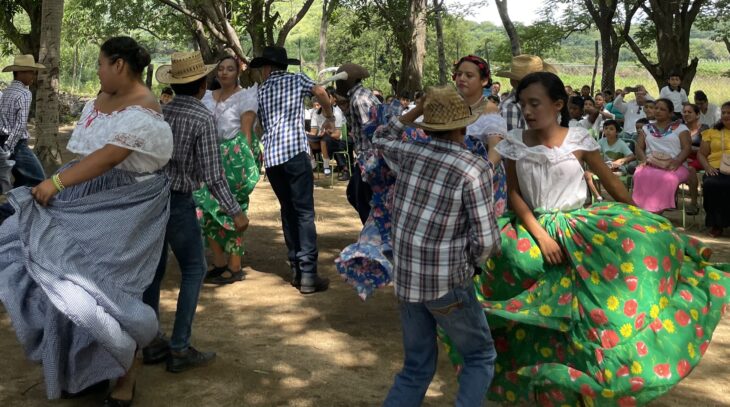
The main school we are working with is the Escuela Secundaria Tecnica 11, in Colonia Azteca, near the town of Arriaga. This school educates about 85 middle school aged students. We were welcomed by a Director Vincent Medina, and a beautiful event with students singing and dancing, and the town’s marimba band played.
We brought about 20 computers and a projector, and are working to get better internet. The school only had one computer on the campus before, so this small computer lab is the first chance most of the students will have to use technology.
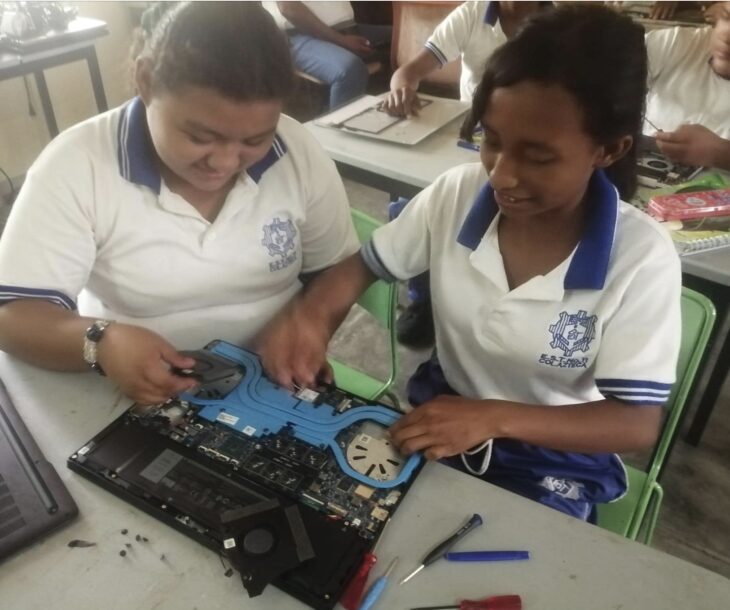
In addition to Chris, the team also includes Danny Leclaire, who is a member of the Shoshone-Bannock tribe of Idaho, and a computer repair expert. Jess Lee also is participating and is helping with communication and seeking funds.
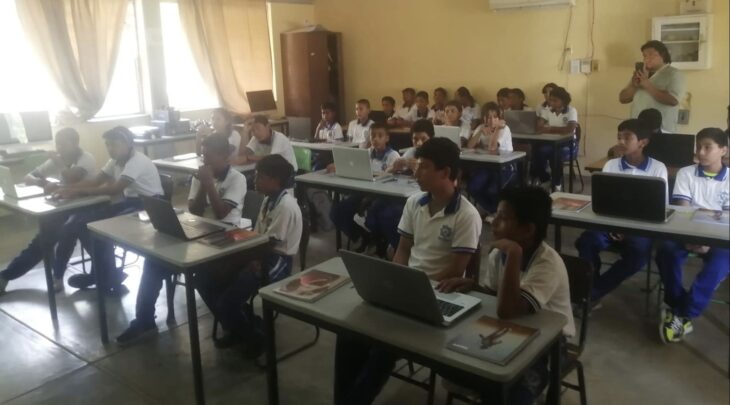
The colonias of Azteca and Malpaso are beautiful but not wealthy. Adobe, brick and concrete homes are scattered on rutted dirt roads. Moto-taxis are a common form of transportation. Water comes from shallow wells that run dry in years without rain. And it is hot. We were there in October, and it was humid and in the 90s. It’s even hotter from April through September. There’s very little air conditioning, so many people sleep in hammocks because they are a bit cooler.
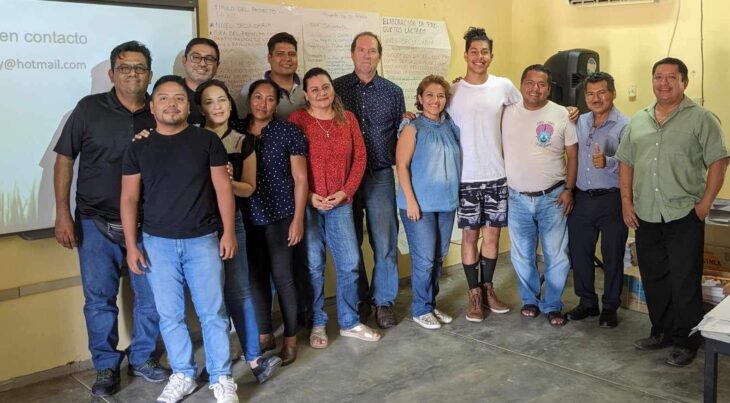
Ten teachers working to design projects
I was able to spend a day with the ten teachers of the Escuela Secundaria 11, assisted by Emiliano, who shared his perspective as a recent high school graduate. I shared structures and strategies for Project Based Learning, and the teachers collaborated in four groups to develop original projects building on student interests. One group came up with a project focused on reviving Dia de Los Muertos observations. Another group was interested in having students research and develop better ways to make cheese using milk from the school’s cows. Another project was designed to have students come up with ways to combat violence in homes, the community, and the school. And one was designed to help students enact their own power by taking action in creative ways.
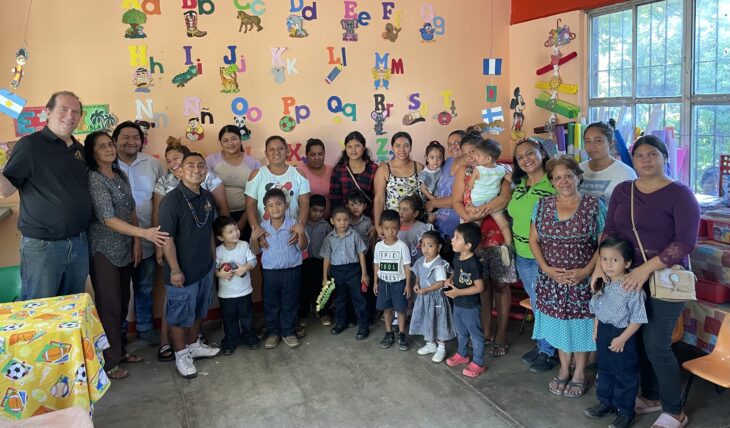
At the Jardin de Niños y Niñas
We also visited two other schools for younger students. The Escuela Primaria Jose Maria Morelos y Pavon serves elementary students in the colonia of Malpaso, and a few blocks away is the Jose Maria Pino Sudrez Jardin de Niños y Niñas preschool. These schools are beautiful places of learning with an amazing level of parent involvement and support. We are going to try to get three computers, a projector and internet for the elementary school, and one computer, a projector and internet for the preschool.
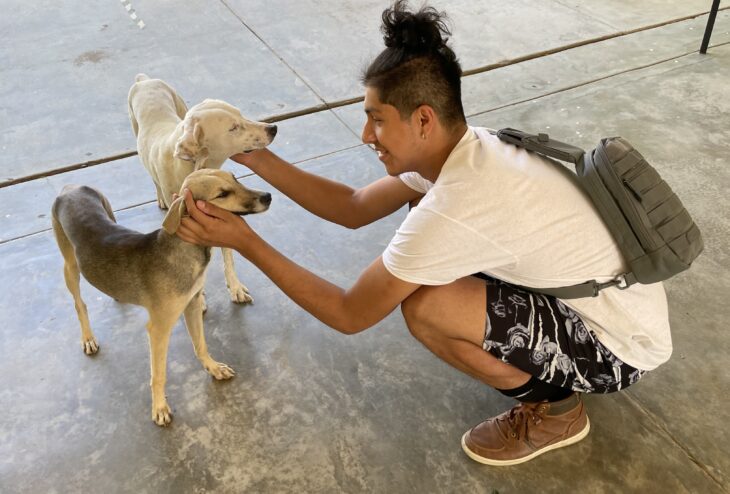
Sopo and Veni, the school’s dogs
An unexpected aspect of the project arose from our interactions with the many street dogs we encountered along the way. Our team also included Chris’ nephew, Emiliano, who is 19 years of age, loves animals, and hopes to become a veterinarian. Emiliano was born in the US, and this was his first visit to his family’s place of origin. We discovered that most of the street dogs are eager and grateful not only for a bit of food, but for some head scratches and affection. The school has two dogs, Sopo and Veni, who are more or less residents there. They are undernourished and have fleas and ticks.
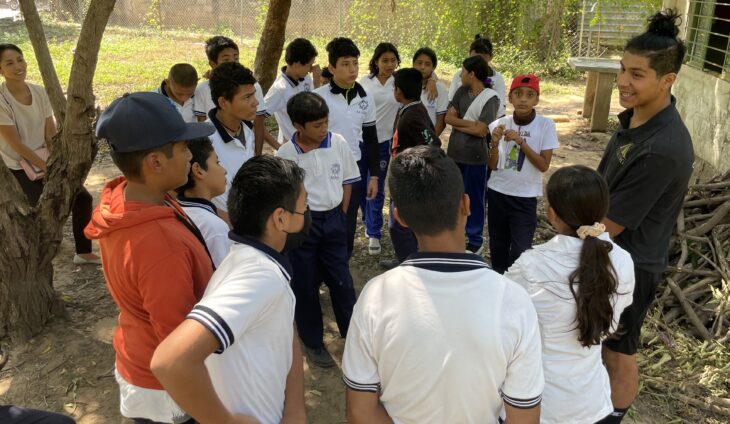
Last Friday Emiliano had some students help him round up Sopo and Veni, and brought them to the Ag building. The Agronomy teacher, Erick, helped him wash the dogs and give them injections of vaccines, vitamins, and a remedy for fleas and ticks.
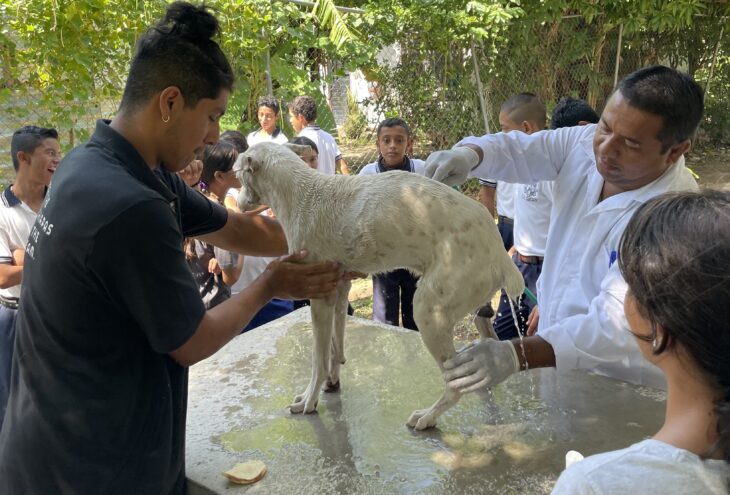
Emiliano and Teacher Erick wash Sopo
When Emiliano was done treating the dogs, he gathered about twenty-five students around and invited them to join a new Amadores de Animales Club (Animal Lovers Club). His aunt, who lives a few miles away, and is also an animal lover also spoke, and she will be a local supporter of the club, since Emiliano will be returning to his home in Washington. Another street dog was rescued from outside the school, a puppy we named Ramon. Ramon has been adopted by Chris’ aunt, who hopes he will grow into a home protector. He spent his first day hiding in the bathroom, but has made major progress and soon will be a brave defender.

Ramon, the guard dog
Chris has set up a small non-profit to fund this work. You can read about the work at the organization’s website here: www.mxdream.org. Your donation will go very far here, first because just a small amount makes such a big difference in this community, and second, because this non-profit is grassroots, and has no staff or overhead. A donation of $20 pays for a month of internet for a school. One of $35 will pay for vaccination and flea/tick treatment for a street dog. Just $65 will buy a large sack of dog food that will feed a dozen dogs for several weeks. All money donated goes straight to these schools – and to support the students, teachers and Animal Lovers Club.




rbeckley10
Anthony, what meaninful experiences for you all! I wish Chris continued success both with his project and his recovery from TBI.
Theo
Wonderful post and story of recovery and growth. Jack
Amika Kemmler-Ernst
Great to hear from you after so many years, Anthony, and to learn of this work! Amika in Boston
LINDA SORIANO
Thank you for a wonderful article about my dear close friend CHRIS. It’s been my pleasure to help financially and give encouraging support so Chris will achieve his dream for his people.